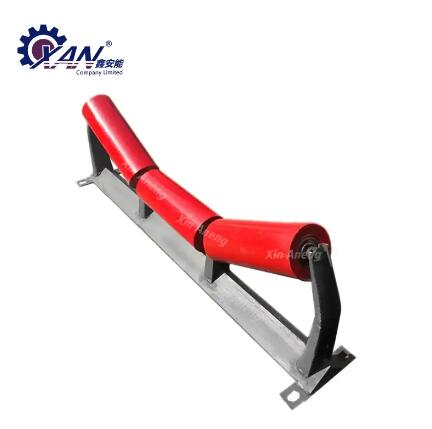Customizing Trough Idler Rollers for Specific Applications
2024-06-06
In the dynamic world of industrial conveyor systems, trough idler rollers play a vital role in the efficient transport of bulk materials. However, not all applications are created equal, and often, the standard, off-the-shelf trough idler rollers may not be sufficient for specific use cases. Customization becomes crucial to ensure optimal performance and reliability. Let's explore how trough idler rollers are customized for specific applications.
Understanding the Application
The first step in customizing trough idler rollers is to thoroughly understand the specific application. This includes factors such as the type of material being transported, the operating environment, the required capacity, and any unique challenges or constraints. By understanding these parameters, manufacturers can tailor the design and construction of the rollers to meet the application's exact needs.
Selecting the Right Material
The material used for the trough idler rollers is crucial in determining their durability, wear resistance, and overall performance. Different materials have varying properties, and the choice depends on the specific application. For example, stainless steel may be preferred for applications involving corrosive materials, while high-strength alloys may be necessary for handling heavy loads.
Customizing the Size and Shape
The size and shape of the trough idler rollers can significantly impact their functionality and effectiveness. Manufacturers can customize the diameter, length, and curvature of the rollers to fit the specific conveyor system and ensure smooth material flow. This may involve modifying standard designs or creating entirely new configurations to meet the unique requirements of the application.
Optimizing the Bearing System
The bearing system is the heart of the trough idler roller, responsible for its smooth rotation and long-term performance. Manufacturers can customize the bearings by selecting the appropriate type (e.g., spherical, cylindrical, tapered) and material based on the application's load requirements and operating conditions. They can also optimize the bearing arrangement and lubrication system to ensure reliable operation and minimize maintenance requirements.
Integrating Additional Features
In some cases, additional features may be required to enhance the performance of the trough idler rollers. This could include impact bars to protect the rollers from sudden impacts, sealing systems to prevent material leakage, or wear plates to extend the roller's lifespan. Manufacturers can integrate these features into the roller design to meet the specific needs of the application.
Testing and Validation
Once the trough idler rollers are customized, it's essential to perform thorough testing and validation to ensure they meet the desired performance standards. This may involve running the rollers under simulated operating conditions, monitoring their performance, and making any necessary adjustments or improvements. The goal is to ensure the customized rollers are ready for deployment in the real-world application and will provide the desired results.
In conclusion, customizing trough idler rollers for specific applications involves a multi-faceted process that requires careful consideration of the specific requirements and challenges. By understanding the application, selecting the right material, customizing the size and shape, optimizing the bearing system, integrating additional features, and performing thorough testing and validation, manufacturers can create trough idler rollers that are tailored to meet the exact needs of the application and ensure optimal performance and reliability.



